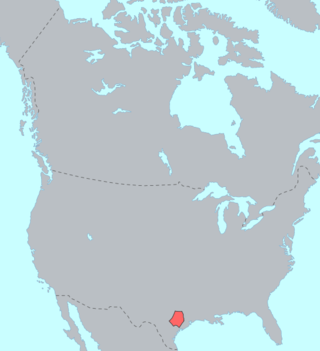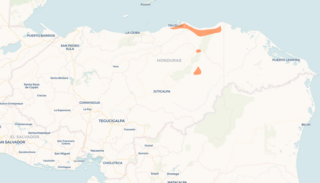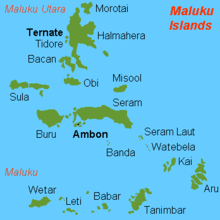Unless otherwise noted, statements in this article refer to Standard Finnish, which is based on the dialect spoken in the former Häme Province in central south Finland. Standard Finnish is used by professional speakers, such as reporters and news presenters on television.
Linguistics is the scientific study of human language. Someone who engages in this study is called a linguist. See also the Outline of linguistics, the List of phonetics topics, the List of linguists, and the List of cognitive science topics. Articles related to linguistics include:

Crow is a Missouri Valley Siouan language spoken primarily by the Crow Nation in present-day southeastern Montana. The word Apsáalooke translates to "Children of the Large Beaked Bird", which was later incorrectly translated into English as 'Crow'. It is one of the larger populations of American Indian languages with 4,160 speakers according to the 2015 US Census.
Neo-Mandaic, also known as Modern Mandaic, sometimes called the "ratna", is the modern reflex of the Mandaic language, the liturgical language of the Mandaean religious community of Iraq and Iran. Although severely endangered, it survives today as the first language of a small number of Mandaeans in Iran and in the Mandaean diaspora. All Neo-Mandaic speakers are multilingual in the languages of their neighbors, Arabic and Persian, and the influence of these languages upon the grammar of Neo-Mandaic is considerable, particularly in the lexicon and the morphology of the noun. Nevertheless, Neo-Mandaic is more conservative even in these regards than most other Neo-Aramaic languages.

The Tonkawa language was spoken in Oklahoma, Texas, and New Mexico by the Tonkawa people. A language isolate, with no known related languages, Tonkawa has not had L1 speakers since the mid 1900s. Most Tonkawa people now only speak English, but revitalization is underway.
In linguistics, apophony is any alternation within a word that indicates grammatical information.
Hungarian grammar is the grammar of Hungarian, a Finno-Ugric language that is spoken mainly in Hungary and in parts of its seven neighboring countries.
The grammar of Classical Nahuatl is agglutinative, head-marking, and makes extensive use of compounding, noun incorporation and derivation. That is, it can add many different prefixes and suffixes to a root until very long words are formed. Very long verbal forms or nouns created by incorporation, and accumulation of prefixes are common in literary works. New words can thus be easily created.
Tübatulabal is an Uto-Aztecan language, traditionally spoken in Kern County, California, United States. It is the traditional language of the Tübatulabal, who still speak the traditional language in addition to English. The language originally had three main dialects: Bakalanchi, Pakanapul and Palegawan.
In Hebrew, verbs, which take the form of derived stems, are conjugated to reflect their tense and mood, as well as to agree with their subjects in gender, number, and person. Each verb has an inherent voice, though a verb in one voice typically has counterparts in other voices. This article deals mostly with Modern Hebrew, but to some extent, the information shown here applies to Biblical Hebrew as well.
The roots of the reconstructed Proto-Indo-European language (PIE) are basic parts of words to carry a lexical meaning, so-called morphemes. PIE roots usually have verbal meaning like "to eat" or "to run". Roots never occurred alone in the language. Complete inflected verbs, nouns, and adjectives were formed by adding further morphemes to a root and potentially changing the root's vowel in a process called ablaut.

The Nukak language is a language of uncertain classification, perhaps part of the macrofamily Puinave-Maku. It is very closely related to Kakwa.
Lau (Law) is a Jukunoid language of Lau LGA, Taraba State, Nigeria. Lau speakers claim that their language is mutually intelligible with the Jukunoid language varieties spoken in Kunini, Bandawa, and Jeshi. They also live alongside the Central Sudanic-speaking Laka, who live in Laka ward of Lau LGA.
The Timoric languages are a group of Austronesian languages spoken on the islands of Timor, neighboring Wetar, and Southwest Maluku to the east.

Pech or Pesh is a Chibchan language spoken in Honduras. It was formerly known as Paya, and continues to be referred to in this manner by several sources, though there are negative connotations associated with this term. It has also been referred to as Seco. There are 300 speakers according to Yasugi (2007). It is spoken near the north-central coast of Honduras, in the Dulce Nombre de Culmí municipality of Olancho Department.

Duna is a Papuan language of Papua New Guinea. It may belong to the Trans New Guinea language family and is often further classified as a Duna-Pogaya language, for Bogaya appears to be Duna's closest relative, as evidenced by the similar development of the personal pronouns. Estimates for number of speakers range from 11,000 (1991) to 25,000 (2002).
Tommo So is a language spoken in the eastern part of Mali's Mopti Region. It is placed under the Dogon language family, a subfamily of the Niger-Congo language family.
Wandala, also known as Mandara or Mura', is a language in the Chadic branch of the Afro-Asiatic language family, spoken in Cameroon and Nigeria.
West Damar, or North Damar, is an Austronesian language of Damar Island, one of the Maluku Islands of Indonesia. In spite of rather low cognacy rates with its neighboring languages, it can be classified as part of the Babar languages based on qualitative evidence.

Proto-Slavic is the unattested, reconstructed proto-language of all Slavic languages. It represents Slavic speech approximately from the 2nd millennium BC through the 6th century AD. As with most other proto-languages, no attested writings have been found; scholars have reconstructed the language by applying the comparative method to all the attested Slavic languages and by taking into account other Indo-European languages.






